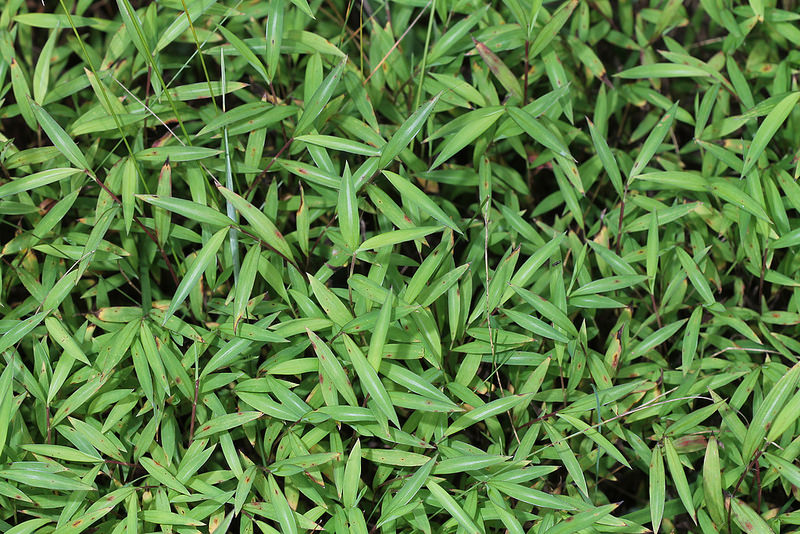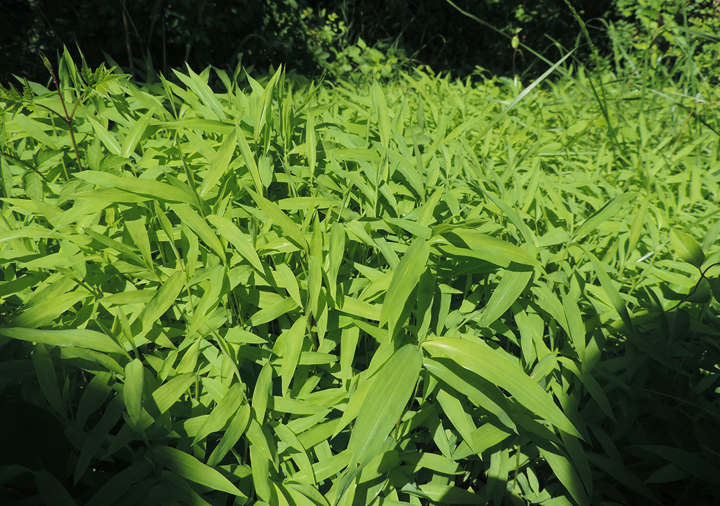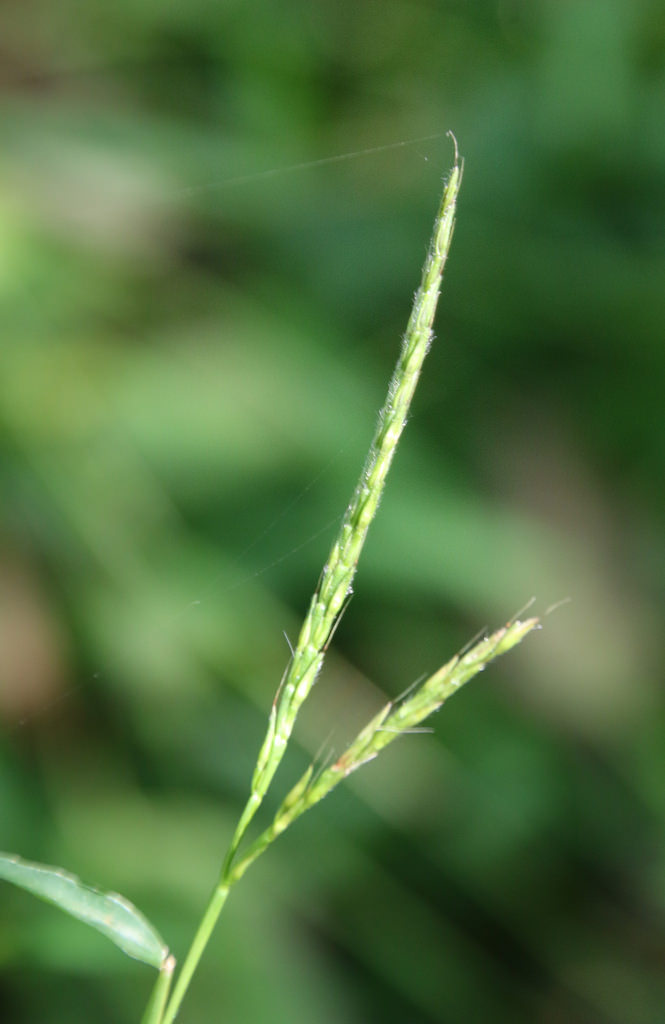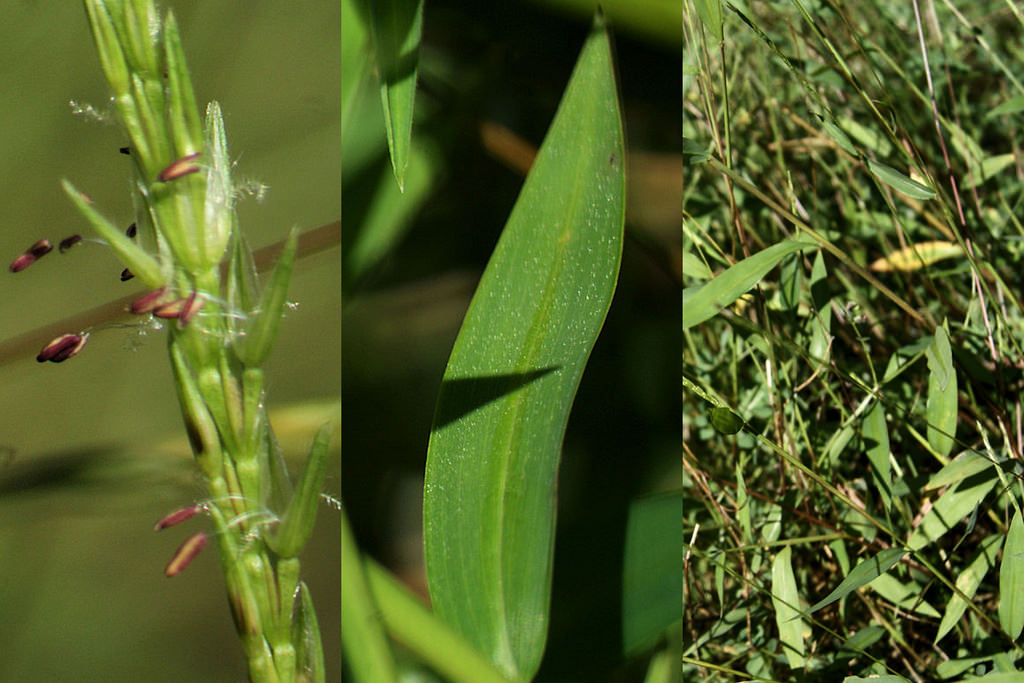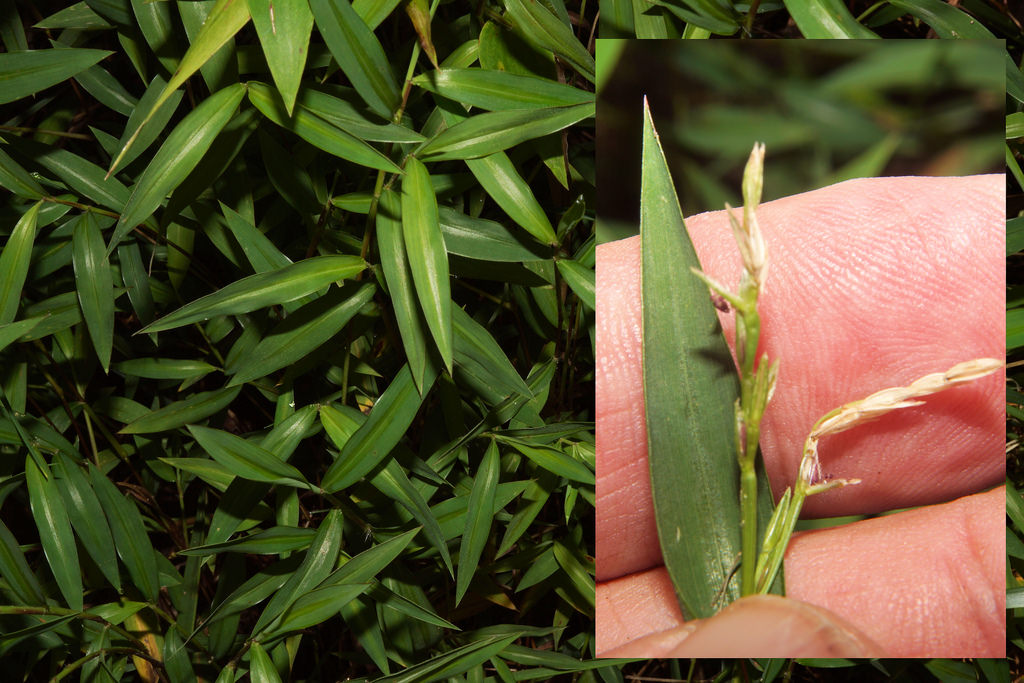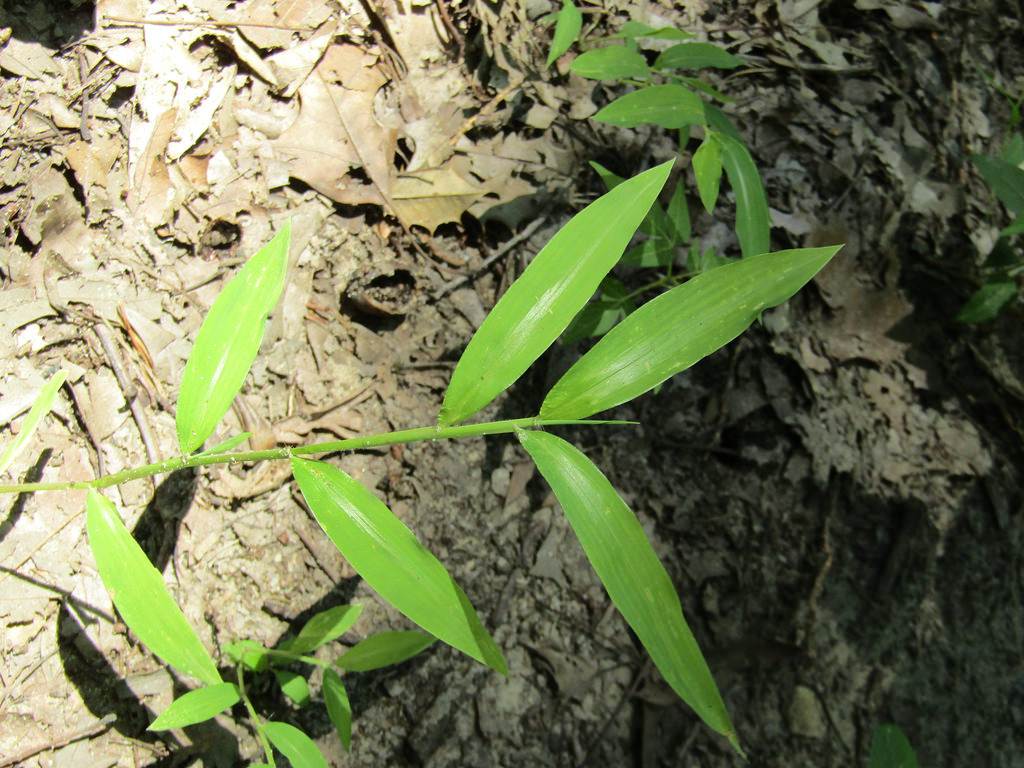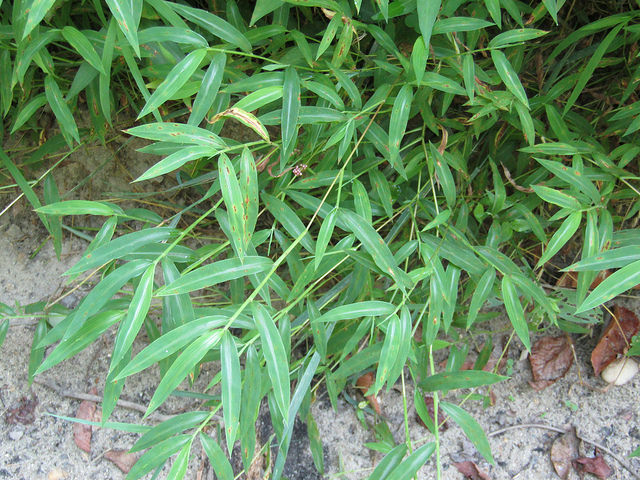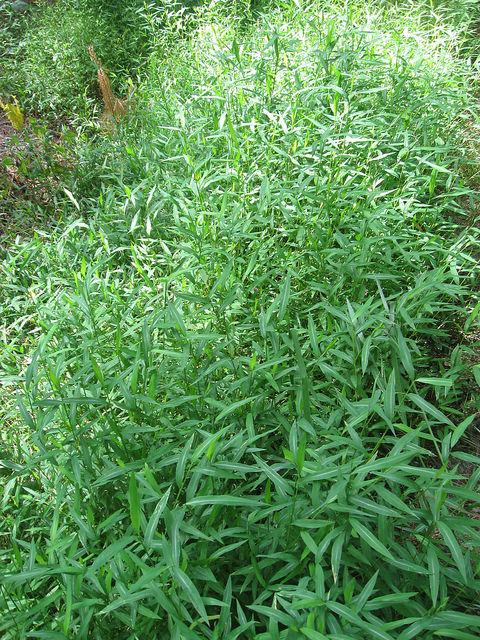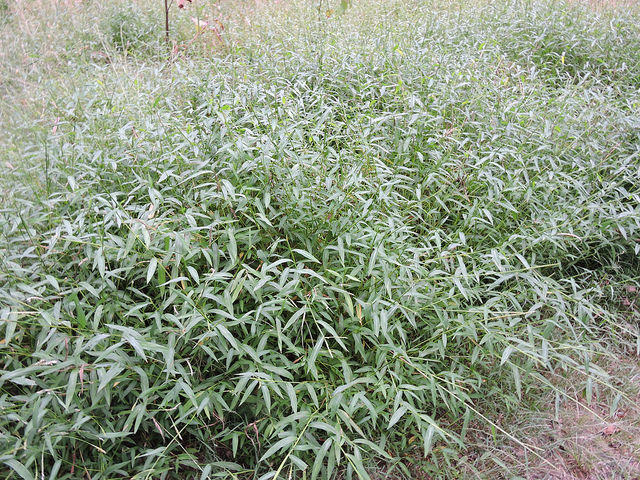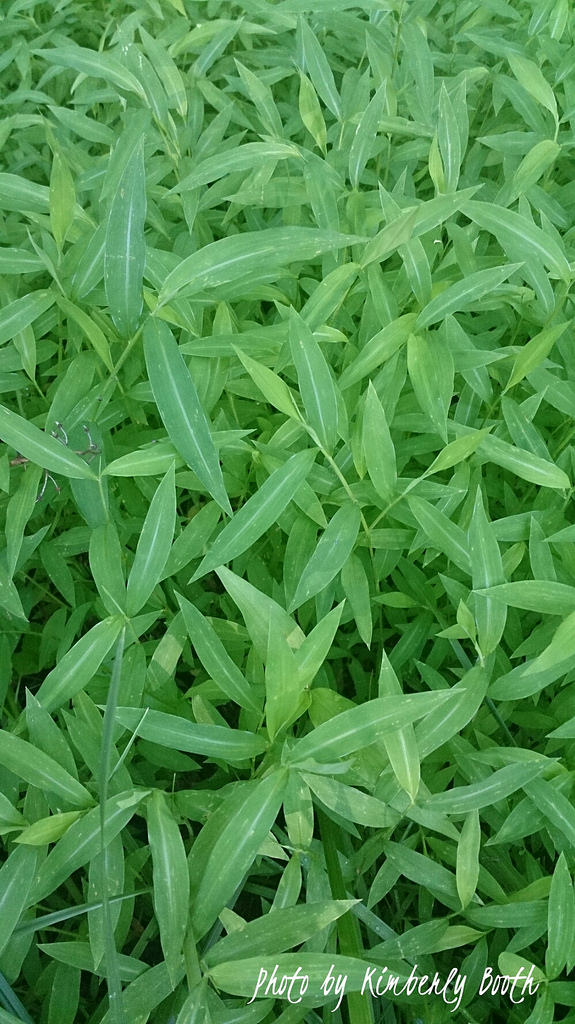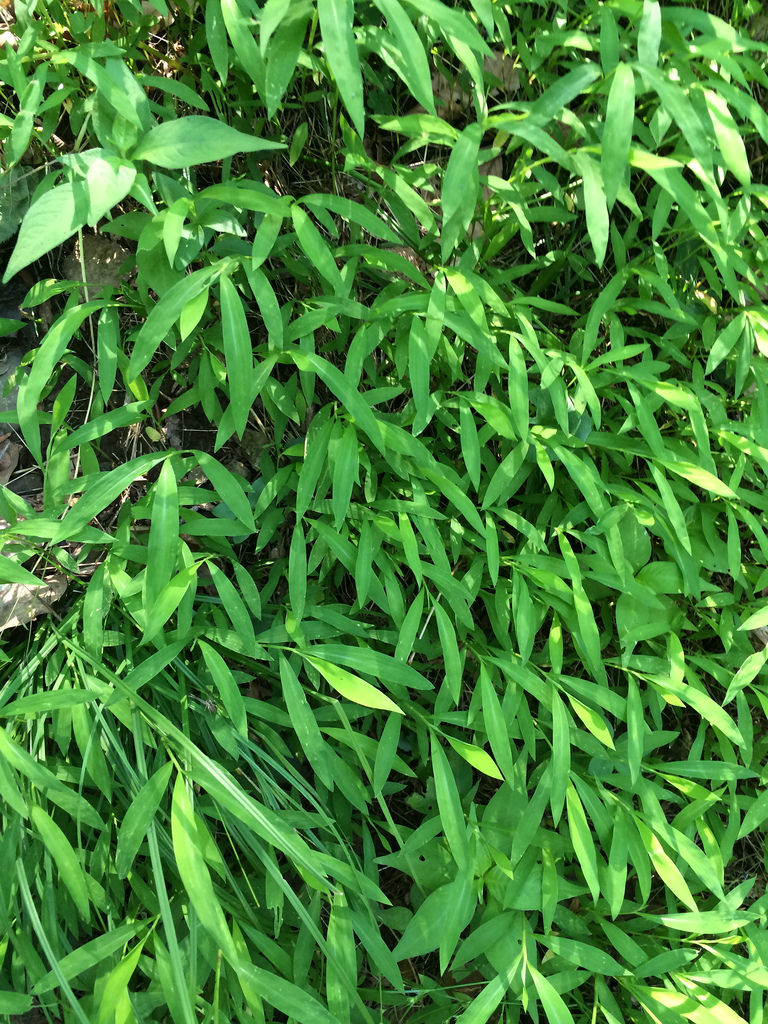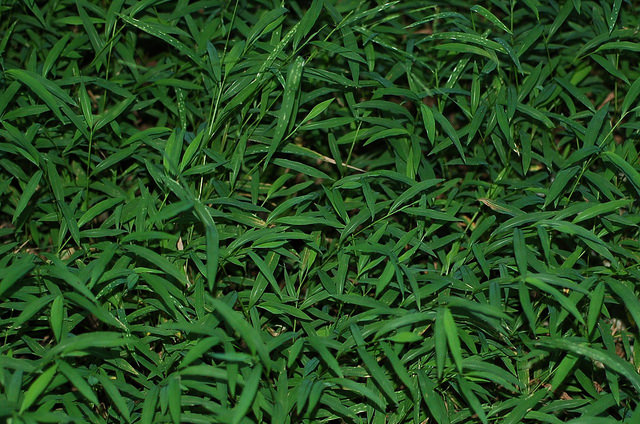Map Snapshot

























489 Records
Status
Japanese Stiltgrass is a highly aggressive, non-native invader, found throughout Maryland. "It readily invades disturbed shaded areas, like floodplains that are prone to natural scouring, and areas subject to mowing, tilling and other soil-disturbing activities including white-tailed deer traffic. It spreads opportunistically following disturbance to form dense patches, displacing native wetland and forest vegetation as the patch expands" (Swearingen, et al., 2010). The ecological havoc it can wreak is demonstrated by its rapid takeover of pristine forest environments that have undergone disturbance. For example, stream restoration projects that have been conducted in small-order, interior forest streams often turn the affected area into a monoculture of stiltgrass. A presentation by Rod Simmons (2017) showed the effects of a stream restoration project at Bear Branch, a small, spring-fed seepage stream in upper Prince George’s County, MD. Rod’s presentation also showed how a different kind of disturbance - deer and human traffic - led to the near-total replacement of a once-diverse forest floor community by Japanese Stiltgrass at the Gold Mine Tract, a part of the C&O Canal National Historical Park, Montgomery County.
Description
Japanese Stiltgrass is an annual that flowers in late summer or fall. It often goes unnoticed early in the growing season, after seed germination and initial growth of the young plants, but as the plants gain height later in the summer, they become much more noticeable. By then, the plants are already setting seed and are very hard to eradicate before the seeds are dispersed. The native White Grass (Leersia virginica) is often confused with stiltgrass. The two species can be differentiated by two major features: The midrib of the leaves of Japanese Stiltgrass is pale and shiny on its upper surface, whereas White Grass midribs lack this feature; and White Grass has hairy nodes in contrast to the glabrous nodes of Japanese Stiltgrass. White Grass and Japanese Stiltgrass often grow together, so care needs to be taken when activating control measures.
Relationships
Northern Pearly-eye has adapted to using this species as a larval host.
Seasonality Snapshot
Source: Wikipedia
| Japanese stiltgrass | |
|---|---|

| |
| Scientific classification | |
| Kingdom: | Plantae |
| Clade: | Tracheophytes |
| Clade: | Angiosperms |
| Clade: | Monocots |
| Clade: | Commelinids |
| Order: | Poales |
| Family: | Poaceae |
| Subfamily: | Panicoideae |
| Genus: | Microstegium |
| Species: | M. vimineum
|
| Binomial name | |
| Microstegium vimineum | |
Microstegium vimineum, commonly known as Japanese stiltgrass, packing grass, or Nepalese browntop, is an annual grass that is common in a wide variety of habitats and is well adapted to low light levels. It has become an invasive species throughout parts of the world, most notably North America.
Distribution
[edit]Microstegium viminium is native to many parts of Asia from Turkey in the west to Japan in the east. In East Asia, it is found in China, Japan, the Russian Far East, North Korea, South Korea, and Taiwan. In Southeast Asia, its native range includes Malaysia, Myanmar, the Philippines, Thailand, Laos, and Vietnam. In South Asia, it occurs in Bhutan, India, and Nepal. In West Asia, particularly in the Caucasus and the Black Sea and Caspian Sea coasts, it can be found in Turkey, Georgia, Iran, and in Sochi in Russia.[1][2]
The species has also been introduced extensively beyond its native range. In North America, it is established throughout the Midwestern United States, the Southeastern United States, the West South Central United States, the Northeastern United States, and southern Ontario in Canada.[1][2]
Description
[edit]It typically grows to heights between 40 and 100 cm (1.3 and 3.3 ft) and is capable of rooting at each node. The plant flowers in late summer and produces its seeds in the form of a caryopsis shortly thereafter.[1][2] It is quite similar to and often grows along with the North American grass Leersia virginica, but L. virginica lacks the distinctive silver stripe on the center of the leaf that is present on Japanese stiltgrass and also flowers one to two months earlier.[1][3]
Invasiveness
[edit]The plant was accidentally introduced into the U.S. state of Tennessee around 1919 as a result of being used as a packing material in shipments of porcelain from China. It has spread throughout the Southeastern U.S. and is now found in 26 states.[4] Microstegium vimineum most commonly invades along roads, floodplain and other disturbed areas, but will also invade undisturbed habitats.[5][6][7] White-tailed deer, which do not browse the grass, may facilitate spread by browsing on native species and thereby reducing competition for the exotic plant.[8] Invasion of Microstegium can reduce growth and flowering of native species,[9] suppress native plant communities,[10] alter and suppress insect communities,[11] slow plant succession[12] and alter nutrient cycling.[13][14] Removal of Microstegium can lead to recovery of native plant communities.[15][16][17]

As this grass is an annual, in order to control it, mowing must be performed before the plants go to seed.[18][19]
This plant has been put on the European list of invasive alien species,[20] meaning that it cannot be imported into or traded in the European Union.[21]
Ecology
[edit]Despite its invasive status in the United States, there are some benefits to stiltgrass. It can serve as a host plant for some native satyr butterflies, such as the Carolina satyr Hermeuptychia sosybius[22] and the endangered Mitchell's satyr Neonympha mitchellii.[23] In the absence of other habitat, stiltgrass is more preferable to have than nothing, providing cover for native amphibians such as wood frogs and toads.[24] Stiltgrass is also unfavorable habitat for ticks due to higher temperature and lower humidity, leading to increased mortality for them.[25] The dead fallen stems of stiltgrass can provide shelter for rodents to the point where aerial predators (owls and hawks) cannot catch them.[26]
White-tailed deer do not eat stiltgrass and help its dominance by eating competing plants. However, stiltgrass can be outcompeted by other aggressive species such as annual ryegrass, Virginia cutgrass, and jewelweed.[27] Stiltgrass can also be controlled by regular fires, thick leaf litter, and succession of taller herbs.[28][29]
Gallery
[edit]-
At Congaree National Park, South Carolina, United States
-
At Devil's Den State Park, Arkansas, USA
-
Near a stream in Central New Jersey, USA
-
Illustration from Wetland flora: Field office illustrated guide to plant species
-
Seeds (caryopses)
References
[edit]- ^ a b c d Thieret, John W. (2006), "Mictrostegium", Flora of North America, vol. 25, New York & Oxford: Oxford University Press
- ^ a b c Chen, Shou-liang; Phillips, Sylvia M. (2007), "Microstegium vimineum", in Wu, Z. Y.; Raven, P.H.; Hong, D.Y. (eds.), Flora of China, vol. 22, Beijing: Science Press; St. Louis: Missouri Botanical Garden Press, p. 593, retrieved 2007-07-14
- ^ Swearingen, Jil M.; Adams, Sheherezade (2006). "Japanese Stiltgrass". Plant Conservation Alliance's Alien Plant Working Group. National Park Service. Archived from the original on 2007-07-03. Retrieved 2007-06-27.
- ^ USDA, NRCS. 2012. The PLANTS Database (http://plants.usda.gov, 19 August 2012). National Plant Data Team, Greensboro, NC 27401-4901 USA.
- ^ Redman, D.E. 1995. Distribution and habitat types for Nepal Microstegium (Microstegium vimineum) in Maryland and the District of Columbia. Castanea, 60:270-275
- ^ Cole, P.G. and J.G. Weltzin. 2005. Environmental correlates of the distribution and abundance of Microstegium vimineum in east Tennessee. Southeastern Naturalis, 3:545-563.
- ^ Moretensen, D.A., E.S.J. Rauschert, A.N Nord and B.P. Jones. 2009. Forest roads facilitate the spread of invasive plants. Invasive Plant Science and Management. 2:191-199
- ^ Knight, T.M.; Dunn, J.L.; Smith, L.A.; Davis, J.; Kalisz, S. (April 2009). "Deer Facilitate Invasive Plant Success in a Pennsylvania Forest Understory". Natural Areas Journal. 29 (2): 110–116. doi:10.3375/043.029.0202. ISSN 0885-8608.
- ^ Bauer, J.T. and Flory, S.L. 2011. Suppression of the woodland herb Senna hebecarpa by the invasive grass Microstegium vimineum. American Midland Naturalist. 165:105-115.
- ^ Flory, S.L. and K. Clay. 2010. Non-native grass invasion alters native plant composition in experimental communities. Biological Invasions 12:1285-1294
- ^ Simao, M.C., S.L. Flory, and J.A. Rudgers. 2010. Experimental plant invasion reduces arthropod abundance and richness across multiple trophic levels. Oikos 119:1553-1562.
- ^ Flory, S.L. and K. Clay. 2010. Non-native grass invasion suppresses forest succession. Oecologia 164:1029-1038.
- ^ Ehrenfeld, J.G. 2003 Effects of exotic plant invasions on soil nutrient cycling processes. Ecosystems 6:503–523
- ^ Lee, M., S.L. Flory, and R. Phillips. 2012. Positive feedbacks to growth of an invasive grass through alteration of nitrogen cycling. Oecologia. DOI: 10.1007/s00442-012-2309-9
- ^ Flory, S.L. 2010. Management of Microstegium vimineum invasions and recovery of resident plant communities. Restoration Ecology. 18:103-112
- ^ Flory, S.L. and K. Clay. 2009. Invasive plant removal method determines native plant community responses. Journal of Applied Ecology. 4:434-442.
- ^ DeMeeste, J.E., Richter, D.D. 2010. Restoring restoration: removal of the invasive plant Microstegium vimineum from a North Carolina wetland. Biological Invasions 12:781–793
- ^ Kleczewski, N.; Flory, S.L.; Nice, G. (2011). "An Introduction to Microstegium vimineum (Japanese stiltgrass/Nepalese browntop) an Emerging Invasive Grass in the Eastern United States" (PDF). Indiana University Department of Biology. Archived from the original (PDF) on 2017-03-09.
- ^ Nitzsche, Peter. "Japanese Stiltgrass Control in the Home Lawn and Landscape". New Jersey Agricultural Experiment Station. Retrieved July 22, 2021.
- ^ "Union list of invasive alien species". June 2021.
- ^ "European IAS Regulation".
- ^ "Butterflies of North Carolina". NC Parks Service. Retrieved 2017-12-06.
- ^ "Host and Nectar Plants". USF Water Institute. Retrieved 2017-12-06.
- ^ Nagy; et al. (July 2011). "Japanese stilt grass (Microstegium vimineum), a nonnative invasive grass, provides alternative habitat for native frogs in a suburban forest". URBANhabitats.
- ^ Citivello; et al. (September 2008). "Exotic grass invasion reduces survival of Amblyomma americanum and Dermacentor variabilis ticks (Acari: Ixodidae)". J Med Entomol. 45 (5): 867–72. doi:10.1603/0022-2585(2008)45[867:egirso]2.0.co;2. PMID 18826028. S2CID 17434766.
- ^ "Why I Hate Japanese Stiltgrass: Reasons 1-1000". Piedmont Gardener. 13 January 2012. Retrieved 23 November 2023.
- ^ "Japanese Stiltgrass". New York Invasive Species Information. 2 July 2019. Retrieved 23 November 2023.
- ^ "IN DEFENSE OF STILTGRASS". Nomad Seed Project. 9 March 2019. Retrieved 23 November 2023.
- ^ Flory; et al. (20 October 2017). "Effects of a non-native grass invasion decline over time". Journal of Ecology. 105 (6): 1475–1484. Bibcode:2017JEcol.105.1475F. doi:10.1111/1365-2745.12850. S2CID 52841363.
External links
[edit]- NPS Plant Invaders of Mid-Atlantic Natural Areas: Japanese Stilt Grass
- Maine Invasive Plants: Japanese Stilt Grass Archived 2019-08-21 at the Wayback Machine, University of Maine
- Species Profile of Microstegium vimineum (Japanese Stilt Grass)—United States National Agricultural Library, National Invasive Species Information Center. Lists general information and resources for Japanese stilt grass
- Microstegium vimineum in Guide to Invasive and Hegemonic Grasses
- Japanese stilt grass | Wisconsin DNR
- Japanese stiltgrass - Invasive Plants Association of Wisconsin
